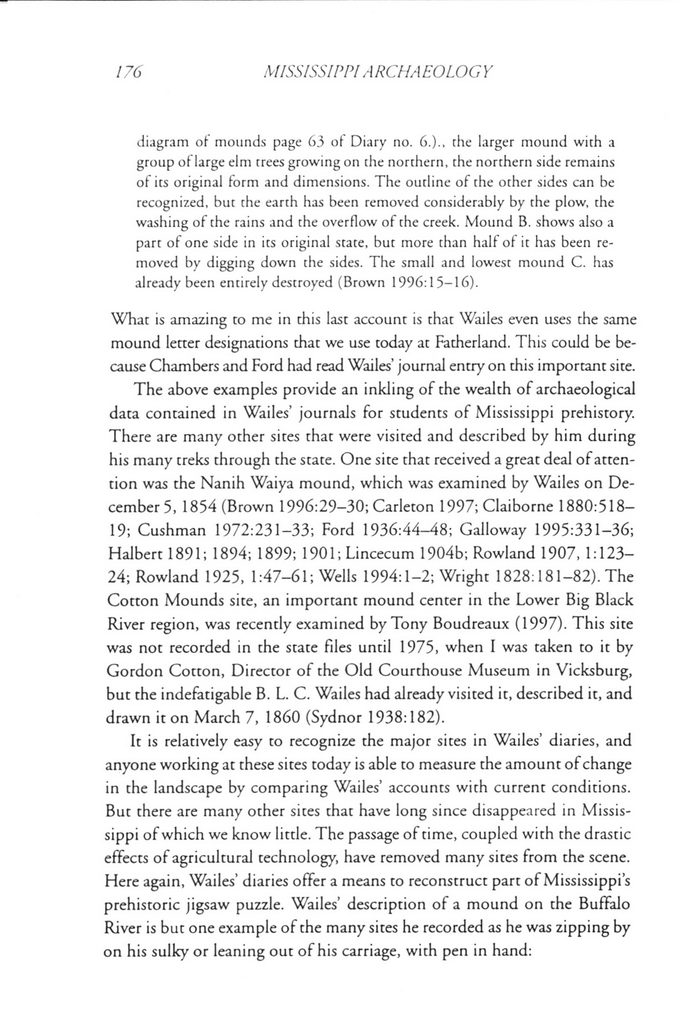This text was obtained via automated optical character recognition.
It has not been edited and may therefore contain several errors.
176 MISSISSIPPI A RCHA EOLOG Y diagram of mounds page 63 of Diary no. 6.)., the larger mound with a group of large elm trees growing on the northern, the northern side remains of its original form and dimensions. The outline of the other sides can be recognized, but the earth has been removed considerably by the plow, the washing of the rains and the overflow of the creek. Mound B. shows also a part of one side in its original state, but more than half of it has been removed by digging down the sides. The small and lowest mound C. has already been entirely destroyed (Brown 1996:15-16). What is amazing to me in this last account is that Wailes even uses the same mound letter designations that we use today at Fatherland. This could be because Chambers and Ford had read Wailes? journal entry on this important site. The above examples provide an inkling of the wealth of archaeological data contained in Wailes? journals for students of Mississippi prehistory. There are many other sites that were visited and described by him during his many treks through the state. One site that received a great deal of attention was the Nanih Waiya mound, which was examined by Wailes on December 5, 1854 (Brown 1996:29?30; Carleton 1997; Claiborne 1880:518? 19; Cushman 1972:231?33; Ford 1936:44?48; Galloway 1995:331?36; Halbert 1891; 1894; 1899; 1901; Lincecum 1904b; Rowland 1907, 1:123? 24; Rowland 1925, 1:47-61; Wells 1994:1-2; Wright 1828:181-82). The Cotton Mounds site, an important mound center in the Lower Big Black River region, was recently examined by Tony Boudreaux (1997). This site was not recorded in the state files until 1975, when I was taken to it by Gordon Cotton, Director of the Old Courthouse Museum in Vicksburg, but the indefatigable B. L. C. Wailes had already visited it, described it, and drawn it on March 7, I860 (Sydnor 1938:182). It is relatively easy to recognize the major sites in Wailes? diaries, and anyone working at these sites today is able to measure the amount of change in the landscape by comparing Wailes? accounts with current conditions. But there are many other sites that have long since disappeared in Mississippi of which we know little. The passage of time, coupled with the drastic effects of agricultural technology, have removed many sites from the scene. Here again, Wailes? diaries offer a means to reconstruct part of Mississippi?s prehistoric jigsaw puzzle. Wailes? description of a mound on the Buffalo River is but one example of the many sites he recorded as he was zipping by on his sulky or leaning out of his carriage, with pen in hand:

Wailes, Benjamin Archeology of Mississippi-20